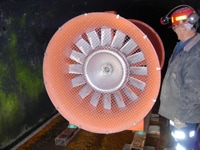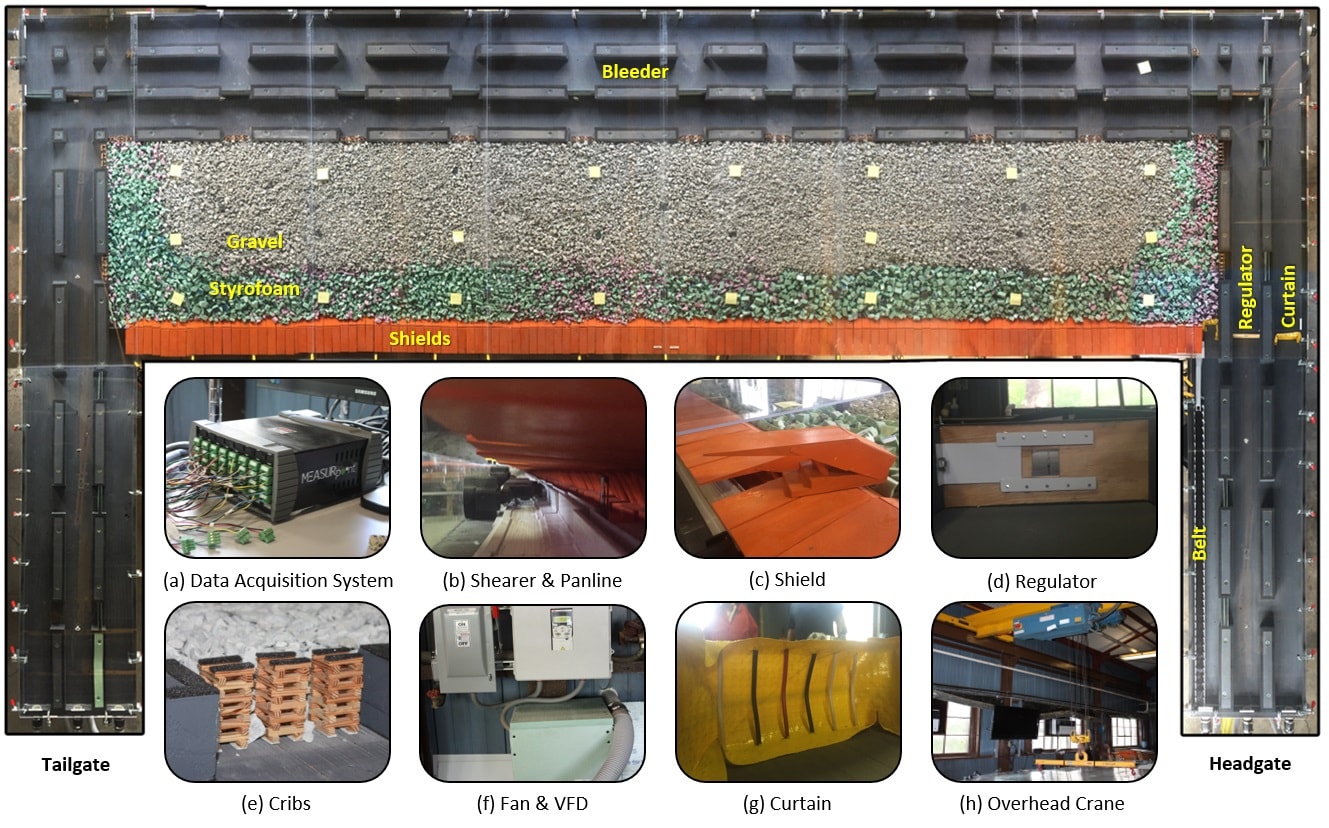Mining Topic: Ventilation Overview
What is the health and safety problem?
Accumulations of explosive methane gas in active and inactive workings constitute the greatest safety risk to the underground coal miner. A mine's primary ventilation system is designed to dilute and control these accumulations. However, increased production from larger longwall panels is challenging the limits of modern and accepted ventilation system designs to maintain safe working conditions.
What is the extent of the problem?
Adequate control of methane is particularly acute in longwall operations using bleeder ventilation systems, especially at the tailgate corner where methane accumulations are most likely to occur. Also, severe changes in atmospheric pressure may cause increased interaction with sealed areas of the mine that can overwhelm the normal ventilation system.
How is the NIOSH Mining program addressing this problem?
 Airflow measurements in mines.
Airflow measurements in mines.
NIOSH Mining developed models to predict methane emissions at underground coal mines and the effects of various methane drainage techniques on emission rates. In addition, ventilation models were used to investigate the effects of larger panels and increased production rates on bleeder ventilation system designs to control methane accumulations on the longwall face and at the tailgate corner.
NIOSH Mining also conducted underground field tests to identify airflow paths in the inaccessible portions of a longwall gob and its associated bleeder system. This work provided critical knowledge on the movement of methane gas and airflow, particularly at the longwall tailgate corner, during various phases of panel extraction. Finally, monitoring of outgassing events from a large sealed gob was used to determine seal leakage rates and changes in gas concentrations in the ventilation air during periods of low barometric pressure.
What are the significant findings?
The research demonstrated that the movement of ventilation air and methane gas through a longwall bleeder ventilation network can vary significantly depending upon the configuration of the network. A bleeder utilizing an offset design to handle differing panel lengths was able to maintain bleeder and airway continuity and keep methane concentrations at safe levels as longwall panel length changed. However, use of this design can greatly increase the complexity of the ventilation system.
NIOSH Mining research also identified the importance of preventing the complete closure of the tailgate entry closest to the gob. If sufficient standing support is installed in this entry, then methane can more effectively move into the bleeder entries, preventing methane buildup at the tailgate corner of the face.
The research also showed that face advance rates should be limited for specific face ventilation airflow quantities and degasification efficiencies, depending on methane emissions into the active longwall area.
What are the next steps?
Research will continue to quantify the effect of ventilation system design on the control of methane, particularly the interaction between methane sources from unconventional shale gas wells and the mine ventilation network. A Longwall Instrumented Aerodynamic Model (LIAM) along with multiple numerical and computational fluid dynamic models are being utilized to characterize the potential risk from methane inflow due to a compromise of a shale gas well casing. These efforts along with ongoing ground control research will be used to provide risk context to stakeholders and regulatory agencies, so they can better manage pillar designs for longwall pillars containing shale gas wells.

Longwall Instrumented Aerodynamic Model (LIAM)
A virtual tour of the LIAM can be accessed here.
- An Analysis of Reservoir Conditions and Responses in Longwall Panel Overburden During Mining and its Effect on Gob Gas Well Performance
- The Borehole Monitoring Experiment: Field Measurements of Reservoir Conditions and Responses in Longwall Panel Overburden During Active Mining
- A CART Technique to Adjust Production from Longwall Coal Operations under Ventilation Constraints
- Cross Formational Flow of Water into Coalbed Methane Reservoirs: Controls on Relative Permeability Curve Shape and Production Profile
- Development and Application of Reservoir Models and Artificial Neural Networks for Optimizing Ventilation Air Requirements in Development Mining of Coal Seams
- Development of a Gas Monitor Simulator and Mine Rescue Contest Field Trials
- The Effect of Ventilation on Spontaneous Heating of Coal
- Field Study of Longwall Coal Mine Ventilation and Bleeder Performance
- Guidelines for the Control and Monitoring of Methane Gas on Continuous Mining Operations
- Guidelines for the Prediction and Control of Methane Emissions on Longwalls
- A New Leak Test Method for Enclosed Cab Filtration Systems
- Predicting Methane Emissions from Longer Longwall Faces by Analysis of Emission Contributors
- Prediction of Longwall Methane Emissions and the Associated Consequences of Increasing Longwall Face Lengths: A Case Study in the Pittsburgh Coalbed